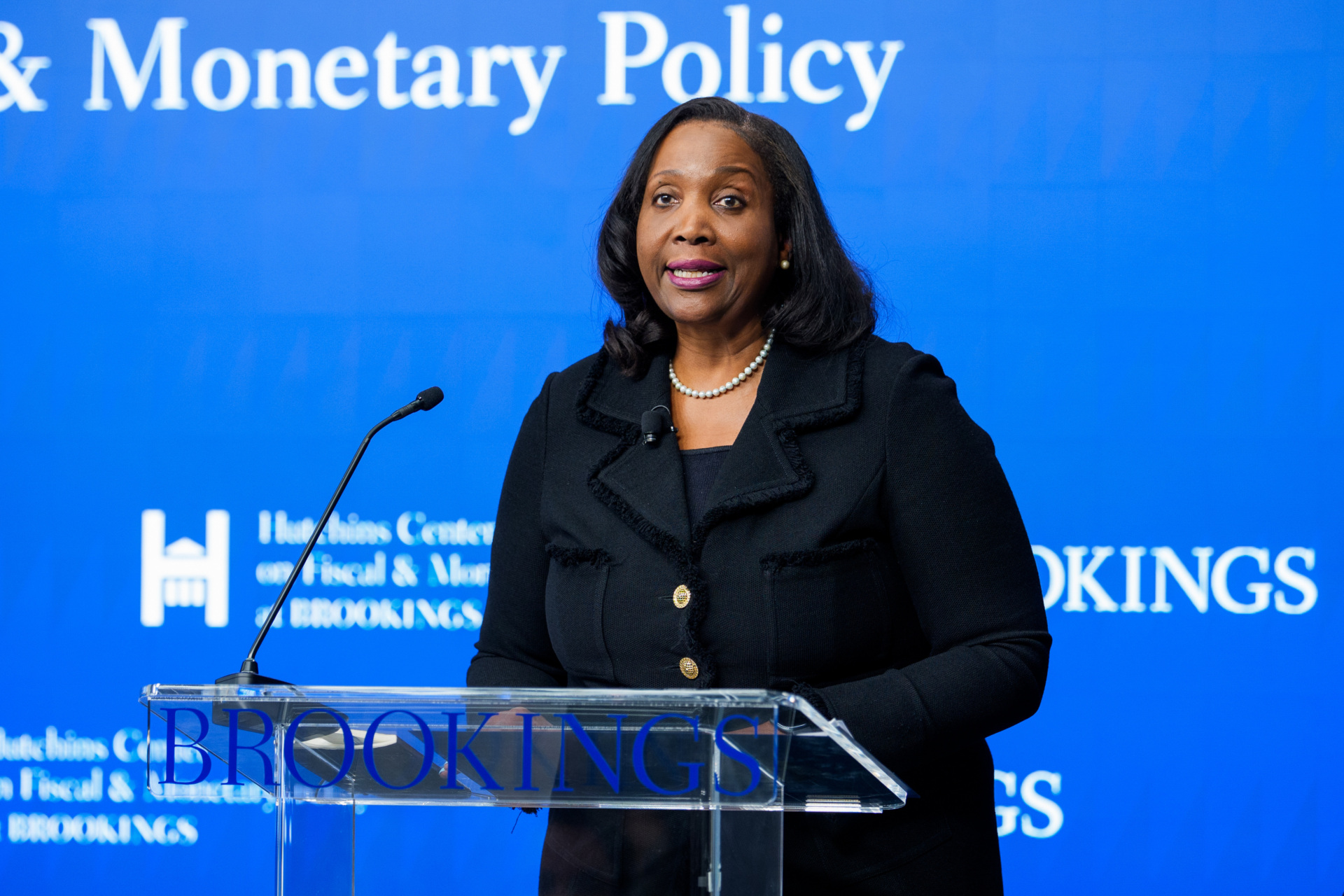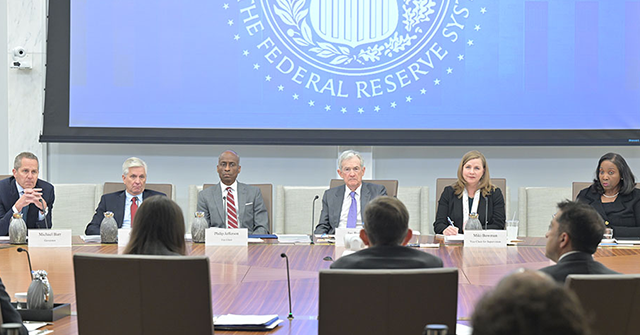Why Inflation Hawks and Doves No Longer Follow Party Lines
Donald Trump gained an unexpected ally Monday in his fight with the Federal Reserve: Governor Lisa Cook, the Fed official he attempted to fire this summer.
Cook, a Biden appointee who is actively suing to block Trump’s removal attempt, delivered a speech arguing that ”the downside risks to employment are greater than the upside risks to inflation”—precisely the position Trump has been advocating for months as he pressures the Fed to cut rates more aggressively.
The alliance is awkward at best. Cook’s case against Trump is headed to the Supreme Court in January and is widely seen as a crucial test of Fed independence. Yet on the core question dividing the central bank—whether to prioritize fighting inflation or supporting the labor market—she finds herself aligned with three governors nominated by Trump and at odds with an Obama appointee leading the opposition.

In some ways, this is reassuring. Monetary policy battle lines should not follow party loyalties and markets should struggle to predict when the economic data is foggy and missing-in-action. Federal funds futures now imply just a 65 percent probability of a December rate cut—down sharply from 94 percent just a week ago, before last Wednesday’s Fed meeting revealed the depth of the central bank’s divisions.
Doves of the Left and Right
Cook isn’t alone among Fed officials supporting further rate cuts. She’s joined by Federal Reserve Governors Michelle Bowman and Christopher Waller—both Trump appointees—who have emerged as the administration’s strongest allies within the central bank. Bowman told an audience on October 14 that she expects ”two more cuts before the end of this year,” while Waller has stated bluntly: ”My focus is on the labor market.”
Stephen Miran, Trump’s most recent Fed appointment, goes even further. At the October meeting, he dissented in favor of a 50-basis-point cut—double what his colleagues approved.
The dovish camp’s shared framework rests on two pillars: First, they believe inflation caused by Trump’s tariffs represents a ”one-time increase” in the price level rather than persistent inflation. Second, they see genuine deterioration in labor markets that requires urgent action.
Recent data appears to support their inflation thesis. Manufacturing surveys released Monday showed welcome signs of easing price pressures, with the Institute for Supply Management’s Prices Paid Index falling to 58.0 in October from 61.9 in September. S&P Global similarly reported that while input price inflation remained ”historically elevated,” October marked the lowest rate since February. Both surveys attributed ongoing cost pressures primarily to tariffs but found the deceleration suggests some relief may be emerging in supply chains.
Federal Reserve board members listen to staff present at an open meeting on October 24, 2025, in Washington, DC. (Federal Reserve via Flickr)
As Bowman explained, she has gained ”even greater confidence that tariffs will not present a persistent shock to inflation,” warranting more focus on employment risks.
Cook emphasized labor market concerns in her Monday speech, noting that ”youth and Black unemployment rates, both of which tend to be more cyclical than total unemployment, have steadily risen” and highlighting growing financial stress among low- and middle-income households in what she called a ”two-speed economy.”
The manufacturing surveys also revealed troubling signs for employment. Both ISM and S&P Global showed weak labor market conditions in manufacturing, with ISM’s employment index at 46.0—indicating contraction—and S&P Global reporting only ”modest” hiring growth. Meanwhile, business confidence remained subdued, with S&P Global reporting optimism falling to its lowest level since April, with ”US trade policy uncertainties” cited as ”a big factor in dampening business spirits.”
The Hawkish Resistance
Leading the opposition to cuts is Austan Goolsbee, president of the Chicago Fed and an Obama administration alumnus. In a striking reversal of traditional progressive priorities, Goolsbee declared Monday he is ”nervous about the inflation side of the ledger, where you’ve seen inflation above the target for four and a half years and it’s trending the wrong way.”
Goolsbee is joined by a growing chorus of regional Federal Reserve bank presidents. Jeffrey Schmid of Kansas City actually dissented at the October meeting, preferring to hold rates steady rather than cut. ”Inflation is too high,” Schmid argued, warning that rate cuts ”could have longer-lasting effects on inflation if the Fed’s commitment to its 2 percent inflation objective comes into question.”
Cleveland Fed President Beth Hammack and Dallas Fed President Lorie Logan have both stated publicly they would have preferred no rate cut at October’s meeting. Even Atlanta Fed President Raphael Bostic, who supported the cut, expressed discomfort with moving policy closer to neutral while inflation remains elevated.
Their concern is straightforward: Core inflation stood at three percent in September—a full percentage point above the Fed’s target—and has shown little improvement. After the painful lessons of 2021-2023, when the Fed initially dismissed inflation as ”transitory,” these officials are unwilling to make the same mistake twice.
The hawkish chorus has grown loud enough that markets have taken note. The sharp decline in December cut probabilities came directly after the October meeting exposed the depth of these divisions. Chair Jerome Powell’s warning that a December cut is ”not a foregone conclusion” wasn’t mere Fed-speak. It was acknowledgment of a genuine impasse.
The question now is which side has read the economic data correctly—and whether the incoming evidence will break the deadlock before December’s meeting. We’ll explore that in tomorrow’s Breitbart Business Digest.
The post Breitbart Business Digest: The Fed’s Strange New Battle Lines appeared first on Breitbart.




